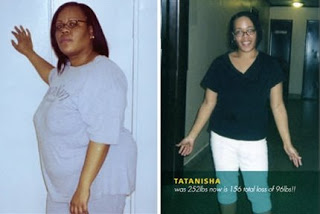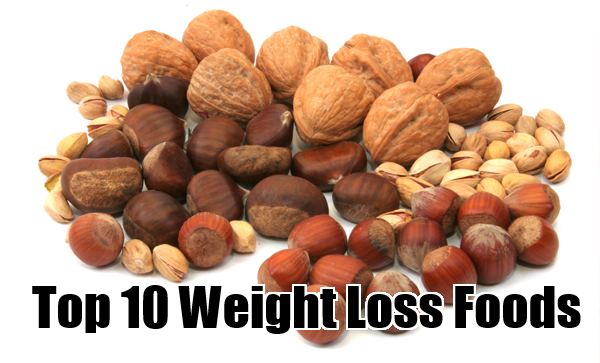How to Use Quantified Self Strategies to Lose Weight
The Quantified Self Strategies movement allows individuals with a goal to track and measure progress in order to achieve specific results. One of the headiest goals for an abundance of people surrounds weight loss. Researchers from Kaiser Permanente's Center for Health Research published a 2008 study in the “American Journal of Preventive Medicine” demonstrating that keeping a food journal (or tracking your intake) can possibly double your weight loss efforts. Researchers found that not only do food trackers lose more weight they shed twice as much as those who do not track any of their food throughout the day. While tracking food is important, how you track your food intake and other factors that influence weight loss will set you up for success.
Steps
-
1
Set your weight loss goal. Before you can explore your tracking options, you’ll need to identify exactly what you hope to achieve with your weight loss goal.
- Determine why you want to lose weight. Do you want to lose a few pounds to look hot in a new pair of jeans or are the reasons more serious such as needing to reduce your blood pressure or risk for diabetes?
- Identify how much weight you want to lose. Instead of just throwing out a number, take into consideration your current weight as compared to your height. Numerous body mass index calculators on the Internet can quickly ascertain whether you are within a normal weight range for your height.
- Consider how long you should track your weight loss. Tracking your weight loss until you’ve reached your goal is obvious, but do you want to continue tracking your caloric intake and/or fitness level well into the maintenance phase? Also, how many pounds do you want to safely lose each week (which should ultimately contribute to the length you plan to track)?
-
2
Evaluate your lifestyle. In order to select the best weight loss tracking system, you’ll need to determine which kind of tracker will fit easiest into your life.
- Parent or executive on the go. If you leave the house at 7am and don’t return until well into the evening, you’ll need to consider a mobile tracking device or one that you can easily keep with you throughout the day.
- Homebody. A stay at home parent or someone who works from home may have the most flexibility when it comes to a tracking system. Being at home allows you to select from a myriad of tracking systems, however you must identify the system that you are most likely to use and can be easily integrated into your daily lifestyle.
- Balance between home and work. If you bounce between home and work, you’ll need to find a tracking device that allows you to track progress at home, but still be accessible if you are on the road or in a different location.
-
3
Determine external variables. Weight loss is not a linear endeavor, so simply tracking food in general may not be the only element toward dropping the pounds.
- Exercise. While exercise alone will not produce weight loss, it can be helpful in terms of reducing your stress level (which may have an impact on stress eating), enhancing your mood (due to the release of endorphins) and boost your metabolism (which can accelerate your weight loss goals). Additionally, weight loss is measured by calories in and out. Burning more calories than you consume will speed the process, which makes exercise or fitness tracking a priority for any who wants to lose weight.
- Types of food. Although all calories should be considered to be equal in terms of weight loss, identifying the kinds of food you eat may help you make better decisions throughout the day.
- Time of day you eat. Nutritionists and weight loss experts contend that breakfast may be the most important meal of the day, however, numerous dieters skip breakfast but end up eating more late in the day. Identifying when you eat may help you establish a pattern to identify when you overeat and the circumstances leading up to the indulgence.
- External influences. Friends, work and family can influence how and what we eat. If your family is sedentary and the pantry is stocked full of junk food, you may find it increasingly more difficult to lose weight. Identifying and revising those external influences such as a junk food pantry or a sedentary lifestyle can help you home in on changes you will need to make in order to be successful.
-
4
Choose a tracking system. Using the information gathered from your goal, lifestyle and external variable evaluation in order to review and decide upon the different methods for tracking weight loss.
- Comprehensive all-in-one online tracking system. If you like to maintain all your data in one place, an online tracking system that tracks food, exercise and mood may be ideal for you. Online trackers like “My Fitness Pal” and “My Calorie Counter” provide an opportunity to input food, exercise and daily journaling in both an online and mobile application. This type of tracker may be ideal for someone on the go either all day or sporadically throughout the day.
- Individual food and fitness trackers. If you would prefer to break out your tracking system and track food using one method and fitness on something different, consider using an online or mobile app such as “The Daily Mile” or “Digifit” to track fitness or exercise. You could still use one of the comprehensive online tracking systems for food only or you could journal your food using pen and paper. This method may be better for someone who is typically at home or in one place for the majority of the day.
- Identify tracking support. Do you automatically know how many calories you shed when you run a 10 minute mile or how many calories are in a two egg omelet? One of the keys to being successful is having the proper resources in place for quick reference. Food manuals from sites such as “Calorie King” can provide a smattering of calorie results from not only individual foods, but also meals at many popular restaurants. Additionally, some tracking systems can help you determine how many calories you’ve burned based on your weight, intensity and duration of the workout. If you are unsure about the intensity, consider purchasing a heart rate monitor system, which will automatically calculate the number of calories you burn during a specific workout. Sometimes amounts vary based on how hard you push yourself--which may not be the same every day.
-
Why Calories Are Not the Same
Not all calories are the same; in fact the quality of the calo
-
7 Spices that Help You Lose Weight
1- Turmeric Curcumin, one the most studied active ingredients in turm
-
A Few Things To Consider When Choosing Your Natural Weight Loss Products
Natural Weight Loss Products You have finally made up your mind abo
-
The Psychology of Weight Loss
For those attempting to lose weight, it might feel a bit intimid
-
Super Weight Loss Suggestions That Remove The Obstacles
Education is the first step to losing weight. With the tons of in
-
Women Are Dying to be Thin
The society we live in demands a standard of perfection, a per
- DON'T MISS
- Portion Control
- How To Turn Off Hormones that Are Causing Weight Gain!
- What Causes Love Handles?
- A Successful Weight Loss Diet Starts From The Inside
- See What Happened To A Woman Who Ate Only Starbucks For A Year
- Don’t Wait: Lose Weight Now And Live Better
- Weight Loss Tip #75: Avoid late night snacks
- Goals For Losing Weight Fast Could Be Set By Using Three Tips
- 7 Simple Weight Loss Tips
- 10 Tips for Changing the Way You Eat




